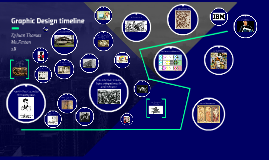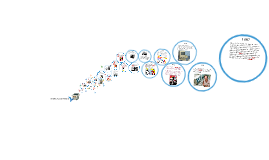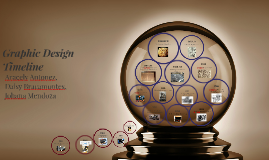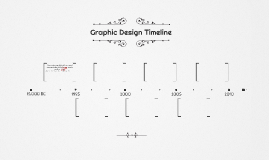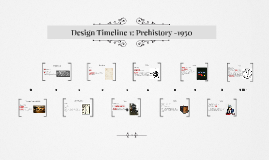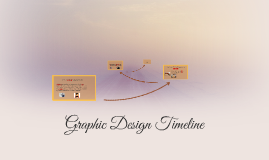Graphic Design Timeline
Transcript: The Netherlands-based De Stijl movement embraced an abstract, pared-down aesthetic centered in basic visual elements such as geometric forms and primary colors. Partly a reaction against the decorative excesses of Art Deco, the reduced quality of De Stijl art was envisioned by its creators as a universal visual language appropriate to the modern era, a time of a new, spiritualized world order 1800 Steven Paul "Steve" Jobs February 24, 1955 – October 5, 2011) was an American information technology entrepreneur and inventor. He was the co-founder, chairman, and chief executive officer (CEO) of Apple Inc.; CEO and majority shareholder of Pixar Animation Studios a member of The Walt Disney Company's board of directors following its acquisition of Pixar; and founder, chairman, and CEO of NeXT Inc. 1890 1276 1796 Though a number of its characteristic events can be traced to earlier innovations in manufacturing, such as the establishment of a machine tool industry, the development of methods for manufacturing interchangeable parts and the invention of the Bessemer Process, the Second Industrial Revolution is generally dated between 1870 and 1914 up to the start of World War I. Dada or Dadaism was an art movement of the European avant-garde in the early 20th century. Dada in Zürich, Switzerland, began in 1916 at Cabaret Voltaire, spreading to Berlin shortly thereafter, but the height of New York Dada was the year before, in 1915. The term anti-art, a precursor to Dada, was coined by Marcel Duchamp around 1913 when he created his first readymades. Dada, in addition to being anti-war, had political affinities with the radical left and was also anti-bourgeois. Distinctive design, mark, or symbol that uniquely identifies a firm. A corporate logo is a powerful corporate identity tool and, as the symbol by which public recognizes a firm, is in some cases more valuable than the physical assets of the firm. 1917 The World Wide Web was invented by English scientist Tim Berners-Lee in 1989. He wrote the first web browser in 1990 while employed at CERN in Switzerland. During the reign of Chingli [慶曆, 1041–1048], Bi Sheng, a man of unofficial position, made movable type. His method was as follows: he took sticky clay and cut in it characters as thin as the edge of a coin. Each character formed, as it were, a single type. 1997 105 AD 1979 Graphic Design Timeline 1980 1880 1450 1970 1950 The logo that was used from 1956 to 1972. The letters "IBM" took on a more solid, grounded and balanced appearance. Even though Gutenberg did not invent most of the devices for which he is commonly given credit, his achievements are monumental. They are rooted in his ability to scientifically synthesize various mechanical elements into an economical, practical product. Gutenberg built on the work of others, starting with their existing tools and devices, which he modified, refined and perfected to suit his purpose. The Second Industrial Revolution, also known as the Technological Revolution,[1] was a phase of rapid industrialization in the final third of the 19th century and the beginning of the 20th. 1901 1960 This process began in Britain in the 18th century and from there spread to other parts of the world. Although used earlier by French writers, the term Industrial Revolution was first popularized by the English economic historian Arnold Toynbee (1852–83) to describe Britain's economic development from 1760 to 1840. The techniques of printing were developed in Europe by craftsmen ignorant of these advances in the Far East. As in China, the earliest printing took the form of illustrated sheets printed from carved wooden blocks These illustrations were largely religious in nature, simple in design, and meant to be coloured by hand, and were made by largely anonymous craftsmen, and very few examples have survived. 1919 The New York School was an informal group of American poets, painters, dancers, and musicians active in the 1950s and 1960s in New York City. Paul Rand was an American art director and graphic designer, best known for his corporate logo designs, including the logos for IBM, UPS, Enron, Morningstar, Inc., Westinghouse, ABC, and NeXT. 1950 Halftone process, in printing, a technique of breaking up an image into a series of dots so as to reproduce the full tone range of a photograph or tone art work. Breaking up is usually done by a screen inserted over the plate being exposed. Frank Lloyd Wright was an American architect, interior designer, writer, and educator, who designed more than 1,000 structures, 532 of which were completed. 1045 AD From the 1880s until the First World War, western Europe and the United States witnessed the development of Art Nouveau (“New Art”). Taking inspiration from the unruly aspects of the natural world, Art Nouveau influenced art and architecture especially in the applied arts, graphic work, and illustration. Sinuous lines and “whiplash” curves were derived, in part, from botanical studies and






